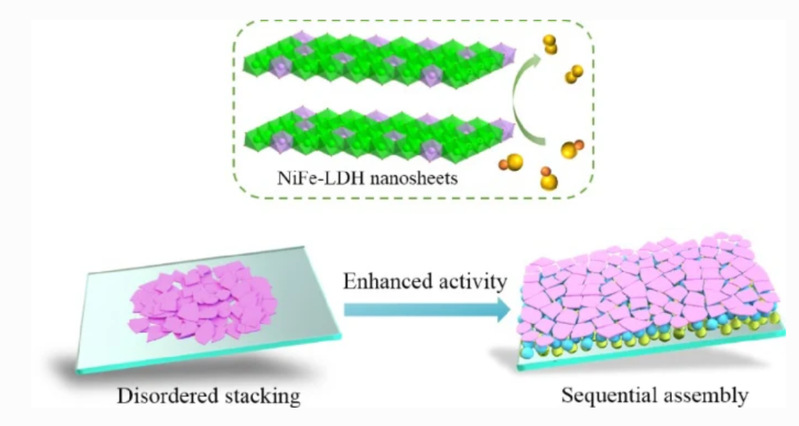
论文题目:Electrostatically connected nanoarchitected electrocatalytic films for boosted water splitting
论文作者:Chao-Peng Wang, Hao Sun, Gang Bian, Jia-Xi Wang, Xixi Pang, Guoqi Wang, Jian Zhu*, Xian-He Bu*
发表期刊:Nano Research, 2023

Abstract
Active sites of two-dimensional (2D) electrocatalysts are often partially blocked owing to their inevitable stacking and hydrophobic polymeric binders in macroscale electrodes, therefore impeding their applications in efficient electrolyzers. Here, using layered double hydroxide (LDH) nanosheets as a model 2D electrocatalyst, we demonstrate that their performance toward water splitting can be boosted when they are electrostatically assembled into an organized structure pillared by hydrophilic polyelectrolytes or nanoparticles in a layer-by-layer (LbL) fashion. In particular, their mass activity on a planar electrode can be as large as 2.267 mA·µg−1 toward oxygen evolution reaction (OER), when NiFe-LDH nanosheets are electrostatically connected by poly(sodium 4-styrenesulfonate) (PSS), while drop-casted NiFe-LDH nanosheets only have a mass activity of 0.116 mA·µg−1. In addition, these homogeneous NiFe-LDH nanofilms can be easily deposited on three-dimensional (3D) surfaces with high areas, such as carbon cloths, to serve as practical electrodes with overpotentials of 328 mV at a current density of 100 mA·cm−2, and stability for 40 h. Furthermore, Pt nanoparticles can be LbL assembled with NiFe-LDH as bifunctional electrodes for synergistically boosted oxygen and hydrogen evolution reactions (HER), leading to successful overall water splitting powered by a 1.5 V battery. This study heralds the spatial control of 2D nanomaterials in nanoscale precision as an efficient strategy for the design of advanced electrocatalysts.
